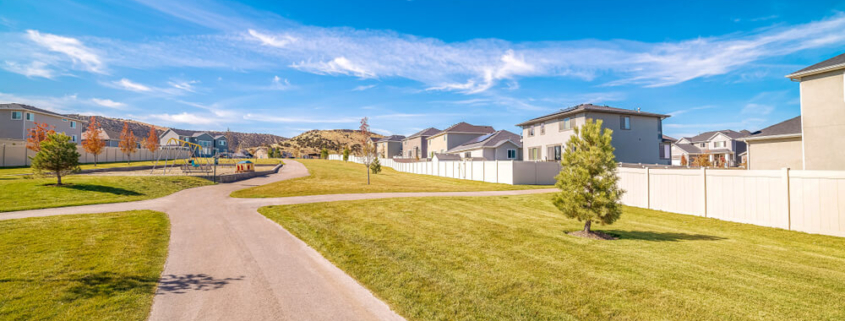

According to a recent survey, 17% of real estate issues were found to be boundary disputes between neighbors. This occurs when residents are uncertain about where their property begins and ends.
Unfortunately, easement disputes can quickly become ugly, lengthy, and expensive. An experienced real estate attorney can help you with skilled legal guidance and direction if you are involved in a boundary dispute with your neighbor.
Overview of Easement Issues in California
An easement refers to a situation in which an entity or individual has the legal right to use or occupy the land of another person for a particular purpose. However, the landowner retains the title. Such property is usually termed “servient estate.” The property owner can keep every other person from using the land except the easement holder.
Types of Easements in California
There are four general types of easements that apply to properties in California. These are:
Easement by Express Grant
Express easements are created when the easement is granted by the landowner. This allows another entity or person to use the land as specified or directed.
An express easement can be created using a contract, grant, deed, or any other form of written document. It’s recommended that you work with a trusted attorney to draft the express easement document. This will help prevent common disputes from cropping up at a later date.
Easement by Implication
The second type of easement is by implication. This is created when it becomes certified by law that there was a previous easement between the two parties (although implied). It’s necessary for the claimant of the implied easement to bring proof that they had the landlord’s word or were already able to use the servient estate for a defined purpose.
Easement by Necessity
Easement by necessity happens when there is no other option but to use the land for the intended purpose. It becomes absolutely necessary to allow the use of land for the specified purpose in easement by necessity. This happens when there may not be any possible alternative for accessing the other person’s property. For instance, a landlocked party will need to use their neighbor’s property for accessing their own property.
Easement by Prescription
A prescriptive easement is generally granted when an individual continues using a part of another person’s land for a certain time period. Easement by prescription can be granted even if the landowner did not specifically permit the use of the land.
Common Examples of Easement Disputes in California
Easement disputes between neighbors are a common issue in California as previously stated. These are a few common easement and boundary disputes between neighbors:
Easement and boundary disputes should not be taken lightly. You should speak with an attorney as soon as possible if you are involved in one. In fact, it is a good idea to consult with an attorney even before you formally discuss the issue with your neighbor.
Your attorney will be able to help direct the conversation in the right direction while maintaining your best interests. They may also outline the available legal actions at your disposal in order to obtain a favorable outcome.
Resolving an Easement Dispute
Easement disputes frequently turn into frustrating and lengthy arguments. But it doesn’t always have to be that way. There are a few possible ways of resolving a dispute if you are a property owner who is frustrated by an easement.
Consult With an Experienced Real Estate Attorney in California
The experienced team of real estate attorneys at Peterson, Martin & Reynolds is committed to offering comprehensive representation with regard to easement disputes and other types of boundary dispute issues. We encourage you to set up a case evaluation by calling us at (415) 849-2564 or reaching out to us online.
https://www.pmrlegal.com/wp-content/uploads/2022/11/shutterstock_1550315339-1.jpg 667 1000 Peterson, Martin & Reynolds LLP http://www.pmrlegal.com/wp-content/uploads/2022/07/logo.png Peterson, Martin & Reynolds LLP 2022-11-21 14:43:19 2024-01-08 21:52:03 Understanding And Resolving Easement Disputes in California